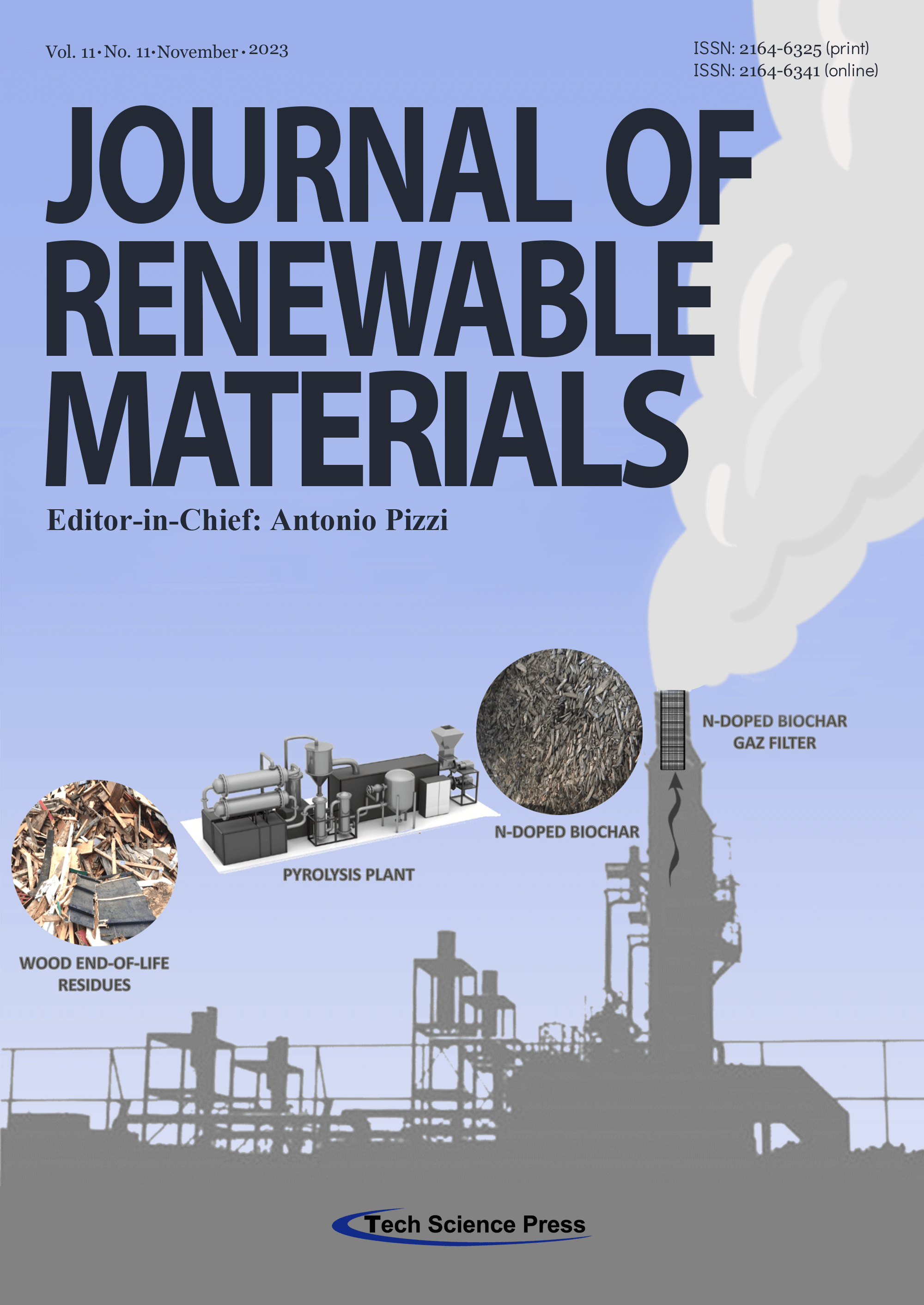A New Exploration of Artificially Induced Spalted Wood of Two Fungi: Hypoxylon and Sistotrema
Yan Yan, Junpeng Dong, Haibo Hu, Susu Yang, Lin Liu, Lei Qin*
Journal of Renewable Materials, Vol.11, No.11, pp. 3907-3916, 2023, DOI:10.32604/jrm.2023.028099
- 31 October 2023
Abstract One strain of Hypoxylon sp. CXM-3 and one strain of Sistotrema brinkmannii CXM-4 were inoculated onto sterilized cherry, poplar, birch, and basswood sheets in a certain shape and incubated at constant temperature and
humidity for 4, 8, 12, and 16 weeks, respectively, to analyze whether the grain pattern formed by the zone lines
was consistent with the predetermined pattern. The results showed that the zone lines of CXM-3 of Hypoxylon
were free, delicate, and soft, with brown lines and black staining, mostly accompanied by black and brown dots,
facets, and clusters, while the zone lines of CXM-4 of… More >
Graphic Abstract
